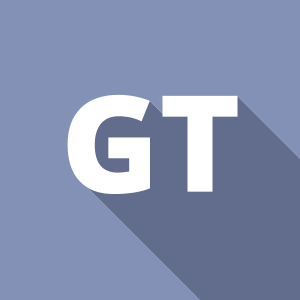Introducing the 22nd (From the 24th) lecture of the legendary Harvard CS50 course, which we translate and sound specifically for JavaRush.
In this lecture, Professor Skazelatti of Yale University demonstrates the use of artificial intelligence in games. The lecture deals with minimax and alpha-beta-clipping algorithms, and also analyzes the robot’s game in tic-tac-toe.
Very soon we will finish the entire course. If you have not seen the previous lectures, it’s time to start getting acquainted with them. List under the cut.
List of the translated lectures:
1st lecture : introductory, introduces the general concepts of programming languages, as well as with a team of teachers And the system of future studies.
2nd lecture : also introductory and introduces general concepts of programming languages, continuing the theme of the first lecture.
3rd lecture : introduces With the concept and compilation functions and tells how in the programs bugs appear (starting from the very first “computer bug “), How to recognize them and how they can be caused.
4th lecture : introduces the types of data and cycles, some basic functions and the basic scheme for compiling the program, and also demonstrates the limitations of the capabilities of computers and
5th lecture : continued about bugs, plus reveals the notion of program structure, explains why you need functions inside code, what is the importance of the scope of values, and introduces a function Strlen. Also from it you will learn how to write off in the CS50, and learn how to save the computer’s RAM in order to avoid segmentation errors.
6th lecture : about the basics of cryptography, arrays and command-line arguments.
7th lecture : introduces the main methods of sorting data. David Meilen talks about bubble sorting, sorting by choice, insertion and merging, and viewers are testing them in practice.
8th lecture : about sorting data by fusion, and a brief digression into the world of bitwise operations.
9th lecture : continuation of the acquaintance with the operator of the condition – if, introduction of the notion of recursion, as well as discussion of the scandal of the Volkswagen concern and the problem of computer security. The lecturer looks in detail at the swap function, demonstrates the ways of working with the program debugger and reveals the structure and mechanics of RAM.
10th lecture : on different methods of compiling lists, storing information about the program and using pointers and
The 11th lecture : the study of pointers, the analysis of the structure of the functions of the CS50 library, acquaintance with the memory leak, the introduction of the concept of linked list and other data structures with a detailed demonstration.
I lecture : about the features of the stack A, a queue and a linked list. The analysis of possible problems associated with access to memory.
13th lecture : on hashing of data, network protocols and how to protect yourself from suspicious strangers with the help of encrypted connections.
14th lecture : introduction to web programming and familiarity with HTML and CSS languages.
15th lecture : introduction to PHP programming language and HTML markup language .
16th lecture : continued examination of the PHP language, now for the development of web applications, and Acquaintance with databases and MySQL.
17th lecture : continued acquaintance with SQL databases.
18th lecture: : introduction to JavaScrip and programming on the side
19th lecture: : the familiarity with the JavaScrip language continues, and the use of computer technologies in archeology is demonstrated.
20th lecture: : discusses the topic Computer security: outlines the basics of personal safety on the Internet, the principles of working with passwords, explains the specificity of malicious software Care. The lecture also touches upon the problems of inviolability of personal data in the modern digital age, including in the socio-political context.
21st Lecture: : Professor Skazelatti of Yale University talks about natural language processing systems. The lecture deals with speech recognition algorithms, reveals the notion of statistical models of speech recognition, hidden Markov models, the question-answer system, semantic processing of text, as well as the topic of creating non-verbal communication systems.
22nd lecture: : Professor Skazelatti of Yale University demonstrates the use of artificial intelligence in games. The lecture deals with minimax and alpha-beta-clipping algorithms, and also analyzes the robot’s game in tic-tac-toe.










I amm surre thiis articlpe hass touchged all tthe internet viewers, iits really really pleeasant piece oof wriiting
oon buildcing upp new blog.
The information is incredibly significant.